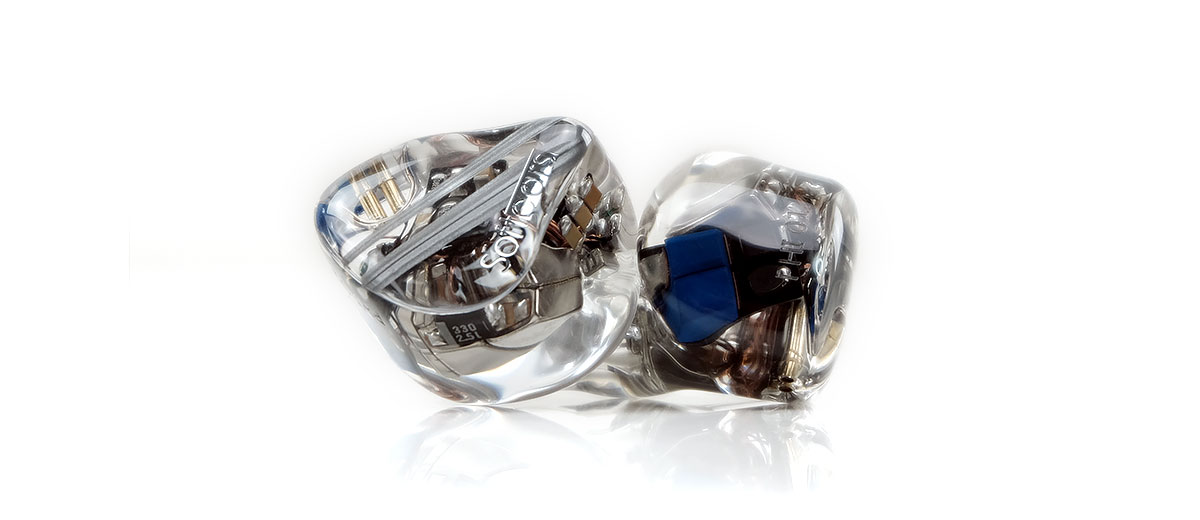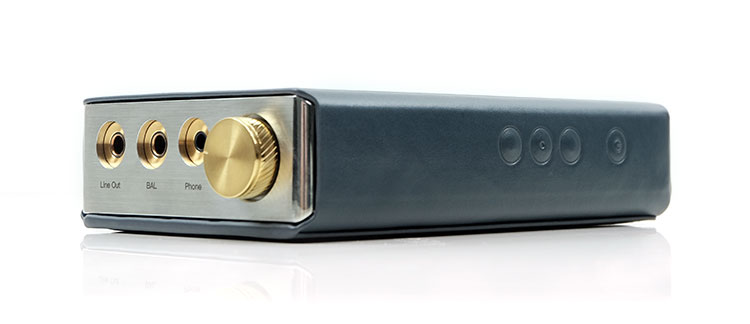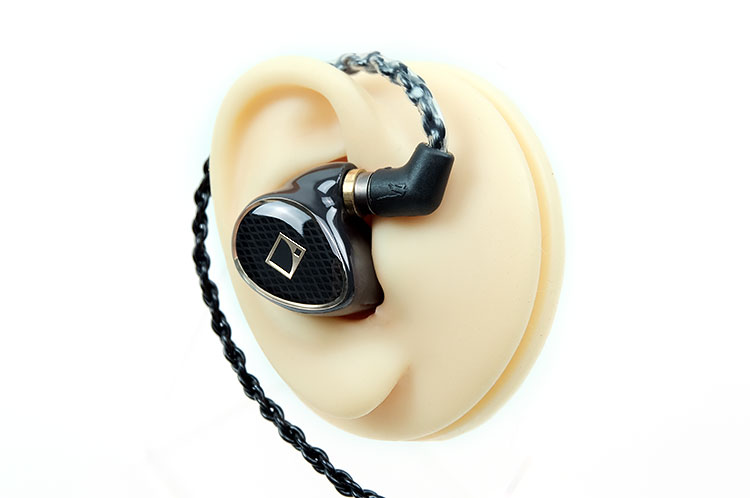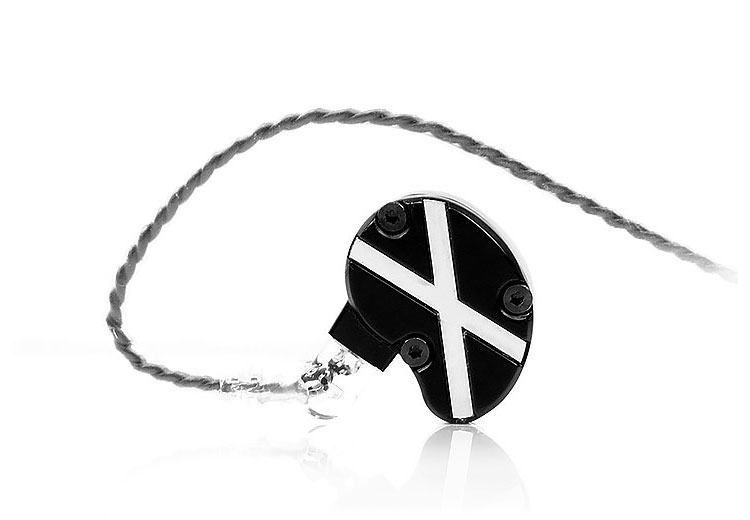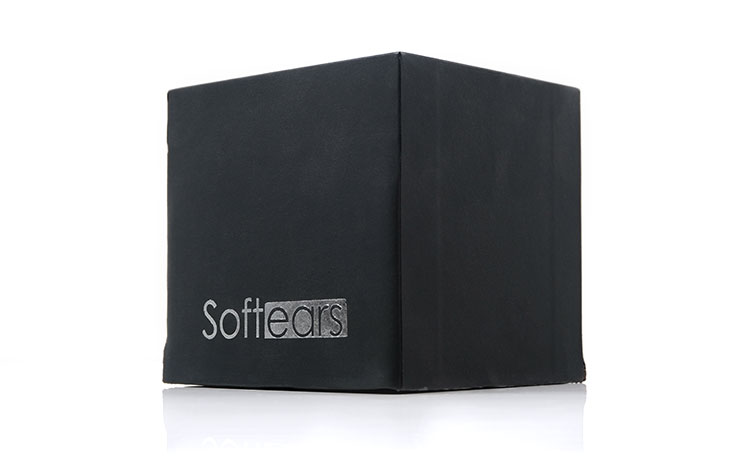Synergy
Efficiency
The Softears RS10 is rated at 25Ω and 100dB SPL and from our testing, this is a monitor that does need a bit of juice to get it sounding optimal. Incremental volume adjustments to affect perceived loudness span quite a few digits meaning for many DAPs in low gain the RS10 is not terribly sensitive to micro-adjustments.
For example, the Cayin N6ii/R01 combo in low gain SE was sitting around 60 for volume, the same as the HiBy R8 and about 50 on the RS6 with similar settings. It took about 4-5 steps for any reasonable volume rise thereafter.
My suggestion here is perhaps to start in high gain for some DAPs if remaining in SE or switch out the cable for a balanced 2.5mm TRRS or 4.4m Pentaconn. From there you can lower the volume level and enhance sensitivity to micro-volume adjustments.
The good news is that the RS10 can easily handle high gain in our tested DAPs, even when in balanced mode. In fact, it sounds livelier, more dynamic, and still retains a very black background. You will find no hiss with the HiBy R8 Turbo mode 4.4mm pairing in high gain which generally has a high noise floor for more sensitive IEMs.
Pairings
The RS10 is a fairy clean-sounding and precise monitor but it is not what I would call a bright sound signature. Compared to the likes of the CTM Da Vinci X it sounds a bit smoother in the upper mids and treble.
Having said that, the steeper dip from the mid-bass to the lower mids means it lacks some euphony in its timbre. For a few pairings, I found the synergy a little too polite sounding with bass light tracks. Pairings such as the FiiO M15 lacked a bit of musicality for me, especially through the mids.
R2R
That might work out quite nicely though for certain genres where absolute precision is required but if you are looking for some natural organic warmth then I would definitely veer to the latest R2R DACs such as the RS6 and the P6 Pro from Luxury & Precision.
Here the RS10’s penchant for detail combined nicely with the warmth of the RS6 and the physicality and dynamic range of the P6 Pro.
When the RS10 excellent low-end bass is not called upon you do need something to add a bit of ‘crunch’ or body to the RS10 lower mids. Especially for thrash metal chord riffs and blues guitar lovers who need to feel the weight and a rich physical presence.
Here the P6 Pro is the better source out of the two for pairing with the RS10. Its balanced tuning and superior dynamic range create a more expansive soundstage with the RS10 and a more accurate harmonic balance. The RS6’s synergy remains strong in terms of timbral warmth primarily in the RS10 lower-mids.
I would also pick the N6ii/R01 pairing for those who want a little more sub-bass push though at a cost of some mids and treble thickness. The R01 stretches the staging quite nicely on the RS10 and makes a good play on that excellent low-end weight the RS10 can produce. However, the RS10 highs are much more ethereal sounding compared to the RS6 and the P6 Pro pairings.
Delta-Sigma
It’s not an entirely R2R pairing, with the likes of the HiBY R8’s denser low-end tuning coming through very nicely with R’n’B and modern pop on the RS10. It has a natural lilt to its lower mids that the RS10 picks up on and those slightly thinner upper mids never really sounded peaky for me with this pairing.
Shredder and speed metal lovers will love the speed and technical capability of the RS10, paired with the likes of the DX300 MAX. Everything is crystal clear and immersive with a superb dynamic range. This was an excellent pairing for detail lovers allowing you to pick out every note from those complex finger tapping solos from the likes of Vai and Mustaine.
Select Comparisons
qdc Anole VX
$2299 (Universal), $2499 (Custom)
The VX was the qdc flagship monitor until the recent launch of the V14 this year. The price point is not too far off from the RS10 and the driver count and type are quite similar with 10 balanced armature drivers.
Technical
Like the RS10, the official listing for the VX has no precise driver configuration and instead we go to the crossovers with a complex 5-way for the RS10 and a 3-way for the VX.
Softears does go into a lot more detail about the low pass and bandpass filtering techniques as well as the use of additional passive driver units for air pressure management and bass fine-tuning. qdc less so but the triple tuning switch capability might be keyed into the 3-way crossover in terms of resistance variations whereas the RS10 is a fixed flat impedance performer.
The VX is rated at a relatively light and breezy 15-19Ω impedance and 110-113dB SPL. The variation is due to the triple tuning switches that work on resistance to vary the performance. The RS10 is far less efficient at 25Ω and 100dB SPL.
You will find yourself reaching for high gain on a number of DAPs to drive the RS10 to an enjoyable level whereas with the VX you might need to be more mindful of outputs with high noise levels such as the older FiiO M11.
Design
The VX sample we have here is the custom format and there are some obvious advantages when you go customs such as the precise fit and superior seal inside your ear. However, the design of this particular unit is the same design as the universal format of the VX which is a very cool-looking frosty finish with intricate patterns when viewing up close.
On the outside, you could argue that the VX, complete with its switchboard to the rear, is a more elaborate and unique design compared to the plain jane transparent of the RS10 resin shells. However, the internal layout of the RS10 will delight nerds to no end and it is nicely organized giving it a bit more character.
Being universal, the RS10 is much smaller than the custom VX, and you can feel that tinier form factor difference in your ear as being somewhat comfier and lighter. That being said, the VX seals better, no question on that. You can improve the seal a bit more by tip rolling those stock silicone tips for something like the Symbio W tips which get very closed to the VX level.
The weak link in the VX is the reversed polarity 0.78mm 2-pin connectors with the protruding sockets. It makes cable rolling difficult without a specific termination to match or an adapter. I advise the adapter at about $30-40 if you have good cable already. The RS10 has the regular 2-pin making it easier to roll cables for.
The VX cable is slightly better in terms of geometry for me than the supplied RS10 SPC 4-core cable. It uses a mix of 26AWG copper and silver inside an 8-core parallel wire, (4×4), geometry build. In short, it is a hybrid cable with a higher core count.
Performance
The VX is a close competitor to the RS10 for that reference-style sound signature. However, there are some deviations that you can pick out.
The first is the general coloration and here the VX sounds a little on the softer side of neutral. That seems driven by a difference in how qdc and Softears approach their respective low-end tuning.
The RS10 has more sub-bass elevation and a steeper drop into the mid-bass. From there it has a fairly flat and neutral line all the way up to around 1k-2k. This has the effect of accentuating the perceived depth and power of the RS10 and keeps the lower mids very clean sounding. However, if the tracks do not naturally have that bass power the RS10 can sound quite flat.
The VX does not have the same sub-bass bias. Instead, it has a gentle rise to around 50Hz and then a slow drop into the lower mids around 500-600Hz. This pulls the weight back a little but adds some mid-bass punch and warmth that in turn, casts that smoother hue on the midrange instrumental timbre.
The VX also has more of a classic 1-2k bump with a short gentle rise into this region that pushes male and some female vocals gently forward. They have a presence but again sound smoother rather than cleaner.
The RS10 lifts the 2-4k region so percussion and higher-pitched vocals have better energy and presence. The general timbre offers more contrast sounding slightly brighter and cleaner.
Both have some bumps in the treble around 7-8k so treble presence is good but the lack of upper mids forwardness in the VX tuning takes a bit of aggression out. Whereas the RS10 has more of the shimmer and sparkle shining through the mids and treble timbre.
JH Audio Contour XO
€1350
The Contour XO is a collaboration project between JH Audio and L-Acoustics of France. It is not the first 10 driver monitors JH Audio has done, the Roxanne is a good example, but it is the first with their new locking pin system and the tuning is more from the L-Acoustics side of the fence. It is also substantially cheaper than the RS10 which makes for an interesting comparison.
Technical
Inside the XO you also have a straight 10 much like the RS10 BA configuration though we do have a better understanding of the driver grouping which are mini quad-driver BA packs using their patented Soundrive™ Technology. So that means 3 specially grouped driver units with a quad low, a dual mid, and a quad high via a 3-way crossover.
The RS10 does differ though in terms of how exactly phase control is done compared to the XO. JH Audio uses their Freq|phase technology which is more about the physical distance of the drivers with the length of the tubing varied to influence the phase and timing of each driver.
Softears focuses more on the 5-way crossover or the electrical side of the implementation with the fuse of filtering techniques to also ensure the driver phase control and timing is accurate and not affected by tube length or the physical distancing of the drivers.
The RS10 is also all about consistency, especially in terms of its flat impedance response and resulting sound signature. The Contour XO takes a different path with the resistance-based bass module attached to the cable allowing you to vary the sound signature’s bass response.
The Contour XO is rated at just 8Ω and 116dB SPL so not the hardest to drive and much more efficient than the 25Ω and 100dB SPL rating for the RS10. Both perform well with higher noise floors DAPs such as the M15, P6 Pro, and the iBasso DX300 delivered perfectly black backgrounds and low noise floors going balanced or SE.
Design
Both the RS10 and the sample we have here of the Contour XO are universal resin or acrylic designs but do have very different form factors.
Both feel similarly weight in the hand with the Contour XO perhaps being the marginally smaller of the two monitors. However, in terms of appearance and finishing, there is a big difference.
The XO is an all-black with gold accents creation with a noire-type vibe to its aesthetic. It is short on the actual nozzle though its positioning means it still inserts quite deeply. The RS10 is transparent with minimal design accents with a visual dominated by its internals.
The Contour XO also has what I define as stricter design lines and is less contoured specifically for the ear compared to the RS10’s softer contouring. That means a few more gaps in the fitting inside the concha so whilst the XO does very well for isolation the RS10 does better IMHO.
The majority of the XO weight is in the new 7-pin connector socket system which at first I did not like but am now quite partial to it. It’s bigger with a very distinctive curved form factor on the top of the shell but far stronger than the 2-pin 0.78mm connector used by the RS10.
What it also means though is cable rolling is almost impossible as only 1-2 companies offer 7-pin terminated cables for it. The XO stock cable is one of JH Audio’s high purity OFC 4N silver-plated Litz wire in black jackets and fairly beefy but just average performers.
The RS10’s lighter stock 4-core 0.78mm 2-pin terminated 6N silver-plated single-crystal copper cable might be a bit of an upgrade in terms of wire quality and easier handling though I believe the XO cable is an 8-core.
Performance
The differences between these depend a lot on where you like your bass module setting on the Contour XO. It can range from fairly neutral and flat to quite v-shaped and exciting sounding whereas the RS10 performance is fixed and more depending on the source pairing.
On its lowest setting, the XO is probably the more neutral of the two, at least on the low-end. It has less of that stronger RS10 sub-bass depth and fundamental underpinning the low-end instrumental notes and a shade more mid-bass to lower-mids elevation.
You can pump up the XO bass quantity with the module but it becomes quite dominating for me at full pelt compared to the superior definition and layering of the RS10 bass.
Instruments are more to the fore on the XO compared to the very flat RS10 presentation. They do sound marginally beefier and smoother whereas the RS10’s flatter lower-mids are cleaner and airier but also thinner sounding.
The XO is more dipped for vocal presence, even when flat on the module, and more so when pushing up the bass presence, especially in the 2-4k range. With the RS10 you get that 2-4k push which opens up the mids a bit more, pushing vocals and some percussion further to the fore.
Both have some ‘zing’ in their treble with some mid-to-upper treble peaking. However, the RS10 is more controlled for me with not as much 7-8k dB elevation whereas the XO is stronger and more aggressive from 5-9k.
You get more contrast in the XO mids timbre as a result so this is where I prefer to push up the bass module to around 2pm to counter it. In doing so it becomes v-shaped, more fun-sounding, and less reference orientated compared to the RS10.
Clear Tune Monitors Da Vinci X
$2399
The Da Vinci X is still CTM’s flagship monitor despite having been launched nearly 3 years ago. It has a similar driver configuration with the big 10 and a price just a little bit higher than the RS10.
Technical
Like the RS10, the X is an all-BA driver monitor with a configuration is 4 for the lows, 4 for the mids, and 2 for the highs, and also like the RS10, using a 5-way crossover. CTM does not expand a huge amount on the types of drivers being used whereas the RS10 is more detailed in terms of customized for the VDSF target curve and the use of additional passive drivers.
Both have their different approaches to their driver implementation also with the RS10 focusing on its crossover filtering implementation for phase and time control and CTM working the X driver placement via their W.I.S.E, (Wave Integrating Sonic Element) acoustical housing and sound wave path design.
The Da Vinci X is rated at a relatively high 43.8Ω impedance rating but with a decent SPL of 117.2dB. Compared to the less resistive 25Ω rating of the RS10 but far less sensitive 100dB SPL the Da Vinci X is the easier of the two to drive by some distance.
You will need decent power for the RS10 but on the flip side, the X is more sensitive to high noise floors and may experience some background hiss with the likes of the M15 or HiBy R8 using their balanced output.
Design
Very different design approaches here. The Da Vinci X is a 3-part CNC aluminum housing with an all-black anodized finish and a detachable silver aluminum nozzle where you can swap some tuning filters.
The external aesthetic is completed with an ‘X’ cut into the faceplates with a silvery chrome finish in the cut to make it stand out and a large torq triple-screw finishing on the edges. It’s robust, but heavy and slightly cold in the ear on a winter’s morning.
The RS10’s resin shell is much cleaner, lighter, and easier for fitting with its stronger custom contouring features. It is, however, less robust and might not stand up to accidental drops as well. The transparent shell finish is quite a contrast to the heavier black of the X. You could argue both are quite clean minimalist finishes and it’s more down to the shaping and material choices.
Isolation on both is quite similar and very good though that will depend largely on your tip choice. The X is a little heavier in the ear though and not quite as comfortable as the RS10. I generally find that to be the case with most aluminum shells.
Both IEMs use 2-pin sockets though the X is an extended style for additional set protection. Most aftermarket cables will fit quite easily though on both of them. The X does come with a good quality 4-wire Hybrid Copper/Silver Alloy hybrid called Jube which CTM sells for $199.99 on their website.
It performs well in terms of clarity and sparkle and the finishing is a bit better than the RS10’s stock 4-core 0.78mm 2-pin terminated 6N silver-plated single-crystal copper cable.
Performance
Another 10 BA driver creation aiming for a straight down the line neutral and clean reference type of sound signature. Only this time I have a feeling the X uses smaller drivers for the low-end because it has that older BA mid-bass centric sound.
What I mean by that is that the X sounds clean, clear, and articulate but lacking in sub-bass power with a significant roll-off below 100Hz. Whereas the RS10 has a more distinct and pleasing sub-bass presence and a slither of mid-bass that actually produces a smoother timbre and a better fundamental than the X.
You can add a little bit of warmth by up to 3dB to the X low-end with the red bass filter and it will do a nice job but it still does not have the same grunt and reach as the RS10 low-end.
The X for me is quite precise, with excellent detail but the timbre through the mids and upper mids has a bit more harmonic dissonance. For me, that’s a classic tizzy tone from the BA drivers that gives it a very slight metallic and lean sound to percussion timbre. The RS10 does not seem to suffer from that, sounding smoother for the same instruments.
I would not say the X is an intimate-sounding monitor but certainly a smaller soundstage than the RS10 and not quite as holographic sounding either. The X is also a bit more mid-to-treble centric whereas the RS10 has definitely improved depth and power on the low-end. It also has a bit more reach and airiness through the mids and highs.
I always thought the X had decent depth for a BA driver IEM so it does show you how well Softears has tuned the RS10 low-end.
Our Verdict
The Softears RS10 is an excellent reference monitor and one I think should definitely appeal to purists and studio monitoring pros alike. It is heavy on resolution and detail, offering a relatively neutral and transparent sound signature but with that one caveat, a sub-bass tuning that packs a bit of wallop for an all-BA monitor.
That ‘ode to bass’ combined with a controlled treble energy level keeps the RS10 from being a purely analytical or sterile experience but still not one that will appeal hugely to euphony lovers. It can be unforgiving and highly revealing rather than bombastic and musical. For that group, I would recommend trying the excellent timbre of their slightly cheaper RSV.
However, I doubt Softears will apologize for that. The RS10 does exactly what they said it will do and with a degree of style to go with it.
Softears RS10 Specifications
- Drivers – 10 Balanced Armature drivers
- Frequency response – 20 – 40kHz
- Sensitivity – 100dB/mV @ 1kHz
- Impedance – 25Ω @ 1kHz
- Distortion – THD<1%, IMD<1%
- Socket – 0.78mm 2pin

